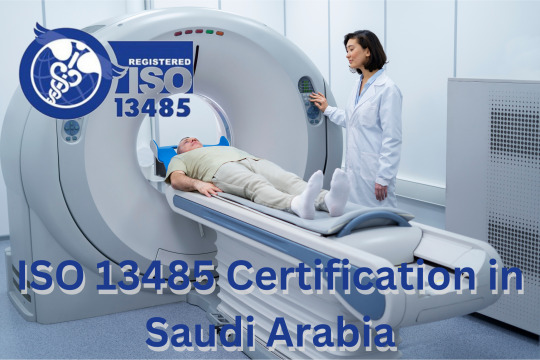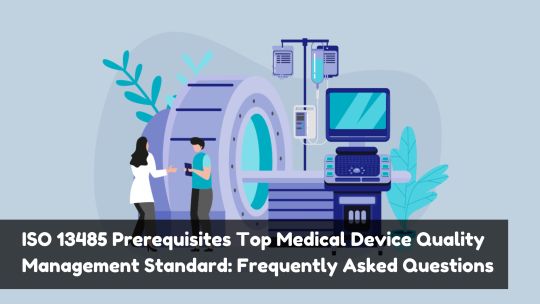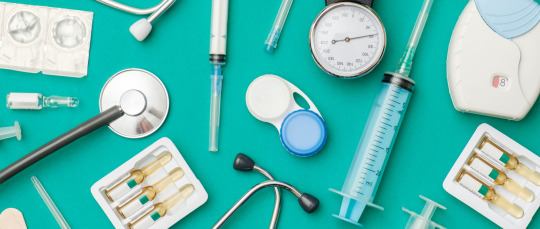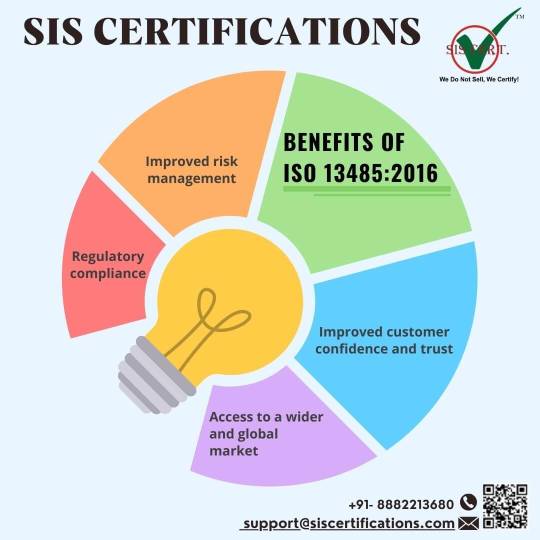#iso 13485 medical devices
Text
How To Make Medical Device Quality Management System?
It is difficult to run a medical business without understanding the concept of a medical device quality management system. The International Organization for Standardization has set a framework for medical device manufacturers. They provide ISO 13485 certification to educate business organizations about their framework and its advantages.
Visit us - https://iso-standards.com/how-to-make-medical-device-quality-management-system/
#ISO Certification in USA#medical device quality management system#iso 13485 medical devices#iso 13485 requirements#iso 14001 certification#iso 14001 environmental management system#iso 14001 2015 standard
0 notes
Text
How Do ISO 27001 Certification Consultants Work?
ISO 27001 certification consultants are doing a commendable job by helping IT companies in fulfilling their responsibilities. If you run an IT service company but you haven’t applied for ISO certification, you should meet an ISO consultant for your future course of action.
Visit us - https://iso-standards.com/how-do-iso-27001-certification-consultants-work/
#iso certification services#iso 270001 certification#iso consulting#iso 22000 certification#Information Security Management System#iso 13485 medical devices#iso 14001 certification
0 notes
Text
What is the ISO 13485 Certification in Saudi Arabia? Its requirements?
What is the ISO 13485 Certification in Saudi Arabia? Its requirements?

What is the ISO 13485?
Specifically designed for the medical device sector, ISO 13485 is a global standard for quality management systems.
The purpose of ISO 13485 is to ensure that medical devices and services consistently meet customer expectations and relevant regulatory requirements. This standard was first published in 1996 and has since been revised in 2003 and 2016, with the current version coming into effect in March 2016. Companies involved in designing, producing, installing, servicing, or manufacturing medical devices should become ISO 13485 certified if they wish to follow this blueprint for quality system compliance.
What are the requirements for ISO 13485 Certification in Saudi Arabia?
1. A quality management system
A quality management system (QMS) is a formal system that documents the structure, processes, roles, responsibilities, and procedures required to achieve effective quality management.
The requirements of ISO 13485:2016 for a QMS include: documenting the structure and processes required to achieve effective quality management; defining roles and responsibilities for all relevant parties; establishing documented policies and procedures related to the standard's requirements; creating records of activities performed following these policies/procedures; establishing key performance indicators (KPIs) for measuring the success of processes within the QMS; using an eQMS software tool that is validated according to 21 CFR Part 11 guidelines before use; monitoring the effectiveness of the QMS through Deming Cycle methodology or other methodologies.
To be certified under ISO 13485 certification in Saudi Arabia, organizations must put in place a quality management system (QMS) that meets certain requirements. These requirements cover various aspects of quality management, including the organization's ability to provide medical devices and services that meet customer and regulatory requirements, as well as its commitment to continual improvement.
2. Management responsibility
Management responsibility refers to the role of executive management in ensuring that your quality management system (QMS) is effective.
It is important for ISO 13485 because it ensures that executive management has the necessary authority to implement and maintain your company's QMS. This includes appointing a management representative who has the power to oversee and manage QMS efforts. Management should also provide evidence of its commitment to this process and ensure that it is working effectively. By fulfilling these responsibilities, managers can ensure that their organization meets all regulatory requirements related to quality assurance standards such as ISO 13485.
3. Scope
ISO 13485 is a quality management system standard that sets out the intended outcomes of a modern medical device quality management system, including the significance of the process approach and continuous improvement.
The standard contains eight clauses that outline its requirements, including principles such as defining objectives and responsibilities, identifying risks, establishing processes to manage those risks, and ensuring continual compliance with regulations. Additionally, it emphasizes the importance of implementing a systematic approach to quality management that involves continuous improvement efforts.
4. Processes and procedures
For ISO 13485, you need to establish quality requirements, define the required processes and supporting documentation, and outline company infrastructure such as work environments and employee qualification and training requirements. You also need to define processes for verification, validation, measurement, monitoring, handling inspection storage distribution, and traceability. Additionally, you need to preserve and protect medical devices during processing storage handling distribution by specifying packaging shipping containers' environmental criteria such as temperature and humidity.
1 note
·
View note
Text
ISO 13485 Certification - ISO 13485 Medical Device Consultant
#iso 13485 consultant#iso 13485 qms#iso 13485 implementation#iso 13485#iso 13485 certification#benefits of iso 13485#iso 13485 medical devices#consultant iso 13485#13485 medical device#iso 13485 standard
0 notes
Text
ISO 13485 Prerequisites Top Medical Device Quality Management Standard: Frequently Asked Questions

A medical device can be as simple as a bedpan or as complex as an individually designed sensor that remotely monitors the functionality of organs in breathing individuals. All medical devices, however, have one thing in common: they all strive to meet the highest level of internationally recognized quality standards when they are created by businesses that adhere to the ISO 13485 medical device quality management standard. The standard is solidifying its stature and ubiquity around the world with the anticipated harmonization of ISO 13485 and 21 CFR Part 820.
A quality management system (QMS) that complies with ISO 13485 Certification regulations does not merely happen if your company is involved in the creation of a medical device. It requires a focused organizational effort, careful planning, and comprehensive comprehension of the work.
What are ISO 13485 Requirements?
All of the ISO 13485 medical device guidelines for maintaining a strong QMS are focused on the secure development, production, and distribution of high-quality medical device goods. The requirement sets forth expectations for the core components of quality management, specifically:
The QMS's basic and documentation standards.
Management obligation (in terms of commitment, customer focus, quality policy, planning, responsibility, authority, communication, reviews, etc.).
Resource administration (i.e., infrastructure, involvement of human resources, and provision of other resources).
Realization of the product, including planning, design/development, buying, manufacturing, controlling equipment, etc.
Evaluation, improvement, and measurement.
Device producers who adhere to the ISO 13485 quality system standards for medical devices have a variety of production advantages, including reduced variation. The reduction of scrap and general improvement of quality procedures due to standard compliance also has an economic impact.
What Markets/Regions Are Affected by ISO 13485 Compliance?
Companies in Saudi and near member states are obligated to comply with ISO 13485 requirements in the production of the majority of Medtech products. The standard is adhered to by all 165 members of the International Organization for Standardization (ISO).
Is Compliance With ISO 13485 Requirements Recognized by the FDA?
The standards outlined in the 21 CFR Part 820 - Quality System Regulation serve as the foundation for the U.S. Food and Drug Administration's (FDA) quality system requirements for medical devices (QSR). However, the organization just unveiled a draught rule that would align Part 820's criteria with those of ISO 13485.
Device manufacturers seeking to distribute products in regions and markets under FDA supervision must still abide by the regulations as separate regulatory advice is still in force at this time. Device manufacturers who want to sell their goods globally should adhere to Part 820 and ISO 13485 regulations.
What Differs About ISO 9001 Requirements From ISO 13485?
The criteria of ISO 9001, the global benchmark for quality management systems, served as the foundation for ISO 13485. For many Medtech organizations, however, ISO 9001's broad objectives for customer satisfaction and ongoing improvement may be too subjective or challenging to evaluate. The goal of ISO 13485 is to maintain the efficacy of QMS by focusing on satisfying certain metrics that assess medical device quality management performance.
Two further key distinctions exist between ISO 13485 criteria and those outlined in ISO 9001:
As was already noted, ISO 13485 focuses more emphasis on risk management.
Additional guidelines for documenting procedures are included in ISO 13485.
Who Enforces ISO 13485 Certification Requirements?
The ISO only develops and upholds ISO standards; it is not an enforcement body. An authorized third-party certification body's audits are used to verify compliance with ISO 13485 regulations. These organizations confirm that the medical device quality management system under audit complies with the standard after a successful audit. The validity of that certification is three years.
#ISO 13485#ISO 13485 Certification#ISO 13485 Certification In Saudi Arabia#ISO 13485 Medical Devices#medical devices
0 notes
Text
PT 264: MD-QMS ISO 13485:2016 Internal Auditor Course

We provide Internal Auditors with both the confidence and ability to apply the audit assurance tools and techniques, methodology, and desired behaviours to assess the organization’s QMS Medical Device processes and process controls to consistently provide safe & effective medical device products and services that meet customer and applicable statutory and regulatory requirements.
2 notes
·
View notes
Link
What is ISO 9001? ISO 9001 Certification Consulting
#ISO 9001 Certification Consulting#ISO 17025 Standard Accreditation and Consulting Los Angeles#ISO 17025 Standard Certification Consulting Los Angeles#ISO 45001 Training courses Online Los Angeles#ISO 13485 Quality Management System for Medical Devices Certification Consulting Los Angeles#ISO 45001 Training courses Online California#R2 Audit Training courses#R2 Training courses#R2v3 Masterclass training#ISO 13485 Standard Consulting Los Angeles#e-Stewards Certification and Consulting ISO 9001 Certification Consulting#AS9100C Training courses#ISO 9001 Consulting#ISO 9001 implementation consulting#ISO 9001 implementation training#ISO 9001 Certification and Auditor Training#ISO 9001 documentation#ISO 9001 online training#how to get iso 9001#R2 Certification Consulting#ISO 14001 online training#AS9100 certification consulting and training#ISO 45001 Consultant in California#iso 45001 transition
2 notes
·
View notes
Text
Medical devices and related service quality management systems are governed by ISO 13485 standards. The International Organization for Standardization is the publisher. ISO 13485 addresses:
Quality assurance
Risk Control
Adherence to the law
Efficiency in operations
Capacity to track and retrieve goods and equipment
Improvement of procedures and goods
#iso 13485#iso 13485 documents#iso 13485 certification#medical devices#medical devices documents#iso 13485 accreditation
0 notes
Text

0 notes
Text
It is significant since it is long delayed, with the previous version being released 13 years ago in 2003. ISO 13485:2016 functions primarily as a bridge. This means that this bridge explicitly outlines and defines current QMS expectations for medical device manufacturers. Before these variations were specified and documented in the standard, many of the best practices suggested and adopted were individual and frequently appeared to be based on auditor judgements. ISO 13485 Documentation Requirements ISO 13485 Documentation should focus on identifying processes and keeping the records necessary to demonstrate that these processes are being followed. ISO 13485 Documentation is essential for objective evidence. Objective evidence to support your staff in the design, development, manufacture, and support of medical devices. Objective proof showing that requirements are being met.
#ISO 13485#ISO 13485 documents#ISO 13485 quality manual#ISO 13485 documentation#medical devices documents
0 notes
Text

ISO 13485 Medical Devices Quality Management System - QES
ISO 13485 Medical Devices Quality Management System is a globally accepted standard for Quality Management Systems for the medical device.
0 notes
Text
#iso 13485 certification in usa#iso standard in usa#iso certification services in usa#qms for medical device in united states#iso 13485 certification#sis certifications
0 notes
Text
How to Use ISO 13485 Standard For CE Marking Approval of Medical Devices?
If the medical device is manufactured outside of the European Union, the CE marking provides access to European markets for products. Before putting the product on the market in the European Economic Area, the manufacturer shall be required to get and display the CE mark on the product (EEA). This responsibility shifts to the importer if the medical device is brought in from outside the EEA. The abbreviation “CE” stands for “European Conformity,” which is the English translation of the French word “Conformité Européene.
Since ISO 13485 is in line with European medical device directives, putting it into practise aids in meeting their requirements. As a CE mark medical device consultant , we provide guidance to medical device manufacturer for the proper and valid ISO13485 standard certification.
Important steps for getting CE marking on your Medical Device:
Getting the CE marking on your device involves some logical and formal procedures. The “old technique” demanded that incredibly stringent technical requirements be met. The following steps will be useful as you move through the “new way,” which includes more fair and standard requirements for safety and functionality:
Identify medical device status:
Recognize regulatory requirements and their fulfil-ment:
Development and preservation of the technical files:
Review for product conformity:
Declaration of conformity:
As medical device regulatory consultant we assured that, Companies operating outside of the European market that already have a Quality Management System based on ISO 13485 standard can more easily obtain the CE mark for their products because the ISO 13485 standard already satisfies many of the directives’ requirements for conformity assessment evaluation. In some instances, a manufacturer’s certificate of declaration of conformity is sufficient to get a CE mark for medical devices produced using ISO 13485-compliant systems.
Read More - ISO 13485 Standard For CE Marking Approval
#ce mark approval medical device#iso13485 standard#iso 13485 certification#en iso 13485#13485 certification#iso 13485 medical devices#iso 13485 requirements#iso 13485 qms#iso 13485 quality management system
0 notes